- Home
- Paula Byrne
Belle
Belle Read online
Dedication
For my godson Dominic
Contents
Dedication
List of Illustrations
1 - The Girl in the Picture
2 - The Captain
3 - The Slave
4 - The White Stuff
5 - ‘Silver-Tongued Murray’
6 - The Adopted Daughters
7 - Black London
8 - Mansfield the Moderniser
9 - Enter Granville Sharp
10 - The Somerset Ruling
11 - The Merchant of Liverpool
12 - A Riot in Bloomsbury
13 - A Visitor from Boston
14 - The Zong Massacre
15 - Gregson v Gilbert
16 - Changes at Kenwood
17 - The Anti-Saccharites
18 - Mrs John Davinier
Appendix: Jane Austen’s Mansfield Connection
Acknowledgements
Notes
Bibliography
About the Author
Also by Paula Byrne
Back Ad
Copyright
About the Publisher
Illustrations
The pagination of this electronic edition does not match the edition from which it was created. To locate a specific illustration, please use your e-book reader’s search tools.
Page 2: The Double Portrait (By kind permission of the Earl of Mansfield, Scone Palace)
Page 14: Captain Sir John Lindsay, Dido’s father (Burrell Collection, Glasgow)
Page 30: ‘The Abolition of the Slave Trade’, by Isaac Cruikshank (Private collection)
Page 50: Still life with meat, kettle, cup, sugar loaf and sugar lumps, by Jean-Baptiste Oudry (Musée des Beaux-Arts et d’Archéologie de Besançon/Giraudon/Bridgeman Art Library)
Page 64: Elevations of the north and south fronts of Kenwood House, and the interior of Lord Mansfield’s Library, by Robert and James Adam
Page 82: Lady Mansfield, Dido’s adoptive mother, by Sir Joshua Reynolds (By kind permission of the Earl of Mansfield, Scone Palace)
Page 102: Detail from ‘Four Times of the Day: Noon’, by William Hogarth (Private collection)
Page 110: William Murray, by Jean-Baptiste van Loo (Kenwood House, courtesy of English Heritage)
Page 122: Granville Sharp, by George Dance (Frontispiece to Prince Hoare’s Memoirs of Granville Sharp, 1820)
Page 136: Report of the Somerset case (In T.B. Howell, A Complete Collection of State Trials, vol. 20, 1816)
Page 152: Wedgwood anti-slavery pendant (Kenwood House, courtesy of English Heritage)
Page 160: The Gordon Riots, 1780 (Private collection)
Page 168: ‘Caen Wood in Middlesex, Seat of Earl of Mansfield’, engraving by James Heath, after a drawing by Richard Corbould (Private collection)
Page 186: The Zong: slaves being thrown overboard (Courtesy Everett Collection/REX)
Page 194: Mansfield as Lord Chief Justice, engraving after a portrait by Reynolds (Private collection)
Page 204: Dido Belle, amanuensis to the Lord Chief Justice (The Honourable Society of Lincoln’s Inn, by kind permission of the Treasurer and Masters of the Bench of Lincoln’s Inn)
Page 214: ‘Anti-Saccharrites’, by James Gillray (Private collection)
Page 226: The marriage of ‘John Davinie’ and Dido Elizabeth Belle (Westminster City Archive)
Page 242: Eastwell Park (Private collection)
1
The Girl in the Picture
The Double Portrait
A portrait from the late eighteenth century, it depicts two beautiful young girls. The white-skinned, fair-haired one in the foreground sits on a large, green, high-backed bench, and is dressed in pink silk with intricate lace trimmings. She has a garland of pink flowers in her hair and a double strand of pearls around her neck. She is holding a book. She is reaching out to the girl behind her, taking her arm as if pulling her into the frame. She hardly needs to do so, as the eye is drawn irresistibly to this other girl, with the high cheekbones and the enigmatic dimpled smile.
The girl on the left is dressed in sumptuous white and gold satin, and wears a string of creamy large pearls around her neck. She has expensive-looking droplet pear and diamond earrings, and a white and gold bejewelled turban with an ostrich feather perching jauntily at the back. She carries a basket of fruit, and is wearing an exquisite blue and gold sheer shawl which floats in the breeze as she walks. She is in motion, bursting with vitality and energy. Her knee is bent forward beneath her dress, as if she is about to run as free as the wind. The girl in pink, by contrast, sits still.
The standing girl rests a forefinger quizzically on her cheek as she gazes confidently at the artist. She almost seems to be sharing a confidence. In the conventions of portraiture, a pointing figure may denote a mystery, an enigma, a secret withheld. That may well be the case here, given the knowing look that goes with it. But the gesture also says, ‘Look at me. Look at the colour of my skin.’ It is as if she is asking, ‘Who am I? And what am I, a black girl, doing here?’
The artist must have known that it was an unusual commission. The ‘double portrait’ has a long and distinguished tradition. Typically, the subject would be a husband and wife, a mother and child, or a pair of sisters. In its composition, this portrait conforms to the model for representing a pair of sisters. One could readily imagine the sitting girl as an older sister, studious, conventional and full of good sense. And the standing one as a younger sister, with a little bit of wildness or rebellion about her, and a great deal of passion – of ‘sensibility’, as they would have said in the eighteenth century. The rarity, however, comes from the colour of their skin. This is, as far as we know, the only portrait of its era to show a white girl and a black one together in a sisterly pose.
London is in the background. The viewer can readily make out the dome of St Paul’s Cathedral. Behind the girls is a garden of mature trees that leads down to a lake with a bridge. The season would appear to be high summer. This is clearly the estate of a wealthy man, of someone who would be proud to show off his daughters. A double portrait of this kind was often painted to commemorate a special occasion – a birthday, a coming of age perhaps, or a party or event held on the estate in the summer months when the gardens were at their very best. But surely if a wealthy man in eighteenth-century England really did have one daughter who was white and another who was black, he would have been ashamed of the fact? There would have been the stain not only of illegitimacy but, even more shockingly for the time, of inter-racial sex. You would have thought that the black girl would be concealed below stairs, not celebrated in a large portrait. To a contemporary viewer, the image would have been startling: a black girl, expensively dressed, and on an almost equal footing with her white companion.
Almost equal, because the white girl occupies the foreground of the painting. But the viewer is left with little doubt that it is the black girl who has captured the imagination of the artist. She is dressed in an exotic style, bearing colours that give the painter the opportunity to show off the full range of his palette. The dress, though as expensive and beautiful as the white girl’s, signals her difference. The sheer shawl looks Indian, as do the turban and feather. Intriguingly, a tartan or plaid shawl is tied around her waist. Could she have Scottish heritage?
The white girl is made to look demure – the wreath of rosebuds in her hair suggests virginity – while her black companion sports one of the most fashionable accessories of the day: an ostrich feather, as popularised by the leading fashion icon of the era, Georgiana, Duchess of Devonshire. Georgiana created her first great stir in 1775, when the British Ambassador in Paris, Lord Stormont, presented her with a four-foot-long ostrich feather, which she contrived to incorporate within a spectacular hairdo. Fro
m then on, every fashionable lady wanted an ostrich feather – to the extent that the poor bird was hunted almost to extinction in North Africa. Lord Stormont was the father of the white girl in the picture.
The language of painting in the eighteenth century was heavily symbolic. The basket of exotic produce points to the black girl’s foreign background, with the ripe fruits – grapes and figs and peaches – suggesting her lusciousness. At a literal level, she is carrying fruit that she has picked in the orangery or the hothouse for the dinner table of the big house. But at a metaphoric level she is herself being compared to a sweet foreign fruit flourishing on English soil (a wealthy man with an orangery or glasshouse could grow his own pomegranates and pineapples, but even a middle-ranking householder who was prepared to pay could go to Covent Garden market and buy exotic produce that had been cultivated in the Tarring Fig Gardens of Sussex). The grapes are a mix of black and white, happily entwined in what could be an allusion to some close bond between the girls. Though so physically different, could they share some of the same blood?
We will never know whether the black girl was happy to be dressed this way and to pose as she does. Nor will we know what inspired her pose. The idea seems to be that she is hurrying to the house with the basket of fresh fruit. As she brushes against the green bench on which the white girl sits reading, the latter reaches out a hand and takes her arm. Is she stopping her so as to give an instruction, or to have a sisterly chat? Was it the girls’ idea, or the painter’s, or the commissioner’s, to represent their relationship by means of this encounter? Wherever the conception came from, it is a brilliant evocation of an ambiguous relationship. On the one hand, the white girl is a member of the leisured classes (she sits, she reads, she does not have to work), while the black girl is a servant (she must pick the fruit, take it into the house and then hurry on to her next job). On the other hand, the two girls are companions, at ease in each other’s company and equal in their finery. It seems unlikely that an ordinary servant girl, of whatever skin colour, would wear such clothes when picking fruit.
The dark-skinned girl’s eyes are shiny and expressive. Whatever she was really feeling, the painter has made her look happy. There is a playfulness to her expression that the white girl lacks. Her hair is sleek, not curly, tamed beneath the turban. The silk of her dress clings to her lower body as she moves. The trace of her thigh seen under the fabric is highly erotic in an age when even the outline of women’s legs was rarely seen in public (except on the stage, when actresses were crossed-dressed in ‘breeches’ parts). If you look closely, you can see that the girl’s left hand rests between her thighs in a provocative gesture, offering a whiff of Georgian England’s stereotyping of black women as sexual creatures.
By contrast, the white girl’s stiff hoops and petticoats conceal her body. The tight bodice imprisons her. The extra layer of gauze over her full skirt gives a strange, cage-like effect. Her open book suggests that she is fond of reading. It might be a commonplace book with choice extracts pasted into it, or a conduct book, a work of religious piety or a collection of sermons, though one would like to imagine that it is a volume of poetry or a play, or even an example of that very daring and new genre of literature, the novel. The eighteenth century was the first great age of female reading. Young women devoured Samuel Richardson’s best-seller Pamela, with its daring depiction of a young servant girl who resists her master’s sexual advances and eventually becomes his wife. Not to mention his tragedy of Clarissa, who is raped by her aristocratic lover and dies. Or Fanny Burney’s Cecilia, a troub-led novel about a wealthy young girl who is badly exploited by her male guardians and temporarily goes mad. The latter part of the eighteenth century witnessed a flourishing of heroine-centred novels that explored female consciousness and identity. Questions of marriage and money, propriety and property, were constant themes. Some of the fictional heroines were low-born, lacking in wealth and status and connections; but all were white. It would take a little while longer for a pioneering novelist to depict a mixed-heritage girl, a ‘mulatto’: that is what Jane Austen did during the Regency years in her final, unfinished novel, Sanditon.
The white girl’s open book is a hint of her education and gentility. Few women in the eighteenth century went to school, but well-born girls were educated at home. A good library was an essential room in a gentleman’s country house: the book perhaps also serves to flatter the commissioner of the painting by implying that he has a particularly well-stocked collection.
The sitting girl holds her book in one hand, but our attention is drawn more to the other hand, the one that is stretched out: a white hand gripping the black arm of her companion. In the age of slavery-abolitionist fervour, the motto ‘Am I not a sister and a friend’ was often emblazoned on ladies’ pincushions and hair ornaments. Some modern spectators might feel that the black girl’s ‘ethnic’ costume, her basket of fruit and her sexually charged demeanour are degrading. But the hand gesture suggests affection and equality between the girls. For all the ambiguity of the image, the standing girl is ultimately represented as sister, cousin or friend, not as a servant, slave or inferior being. She is drawn into the picture as a cherished member of the family.
Portraits tell stories, and this one tells a story of love and sisterhood, unity between black and white, illegitimacy and gentility, vitality and virtue. A story, furthermore, that brings us to the very heart of a larger historical story: the abolition of the slave trade.
In the course of the last two and a bit centuries, this double portrait has moved between Kenwood House on the northern boundary of Hampstead Heath in London, where it was painted, and Scone Palace just outside Perth in Scotland. Kenwood House was, and Scone Palace is, the seat of the Earls of Mansfield. The portrait was commissioned some time in the late 1770s or early 1780s by William Murray, the first Lord Mansfield, Lord Chief Justice and the most admired judge in eighteenth-century Britain. His name was by this time irrevocably linked with the question of slavery and abolition, as a result of his judgement in a famous case of 1772.
But these are not Lord Mansfield’s daughters. He and his wife Elizabeth (née Finch) were childless. The girl in the foreground of the picture is Lady Elizabeth Murray, his great-niece, who was brought up at Kenwood following the death of her own mother when she was a young child. For much of the twentieth century, the Mansfield descendants believed that the other girl was some kind of household servant. In an inventory of Kenwood taken in 1904, the portrait was described as ‘Lady Elizabeth Finch-Hatton with a Negress Attendant’, and attributed to the great society artist Johann Zoffany.1 There was a tradition of portraits of masters or mistresses with a servant or slave in the background. It was assumed that this was a variation on the theme, though with unusual prominence given to the servant. The family did not stop to consider the irony of Lord Mansfield, forever seen as a key figure in the abolition of slavery, commissioning a portrait that might seem to imply that he kept a slave himself. The painting remained little-known.
The old portrait plate at the bottom of the frame is still there today. It records the name of only the white girl – ‘The Lady Elizabeth Finch Hatton’. The black girl remains nameless, a blank.
It was only in the 1980s that she was identified. Her name was Dido Elizabeth Belle, and this book tells her story. She was a blood relative of the white girl in pink and the Mansfield family. The outline of Dido’s life has been pieced together, but details in the surviving archives are sparse. For a fuller picture of her life, we need to set her story in the wider context of slavery and abolition. The only way of glimpsing her life is through the lives of others.
2
The Captain
Captain Sir John Lindsay, Dido’s father
On 1 June 1760, HMS Trent was docked in Portsmouth harbour. Captain John Lindsay, commanding officer, oversaw her substantial refitting.1 Over the course of the following weeks provisions were brought aboard, the ship’s pine was varnished and there were some short trips into the
English Channel to test the new rigging. At the end of the month, the Trent moved out to Spithead. Lindsay had to deal with a few men for drunkenness and insubordination. Extra sails and small arms were taken on board. An unknown sail was spotted off Portland Bill, and the Trent gave chase. She proved herself fully seaworthy. Preparations were finalised for a long voyage. In August she set sail for Porto Santo, then Madeira, then Tenerife. By the end of the month she was at anchor off Senegal, on the west coast of Africa.
Then to Cape Verde, where Lindsay moored in Gorse Road while the crew dried the sails and aired the bread. Soon they would be off the Gambia, and then out into open water, heading across the Atlantic in squally weather. On 18 October they approached the Caribbean island of Montserrat, and a pilot from a Bristol-based privateer came on board. Five days later the Trent engaged with a schooner in French colours and boarded her, only to find the crew gone, but the ship laden with sugar and coffee. They sent the prize to St Kitts. Captain Lindsay and his crew had undergone their initiation on the Caribbean front in the worldwide war between the great colonial powers of Europe.
John Lindsay was born in the year 1737, in the bracing climate of the Easter Ross district of the Scottish Highlands. He was the younger son of a baronet, Sir Alexander Lindsay, who had made a very good marriage to Emilia, daughter of the fifth Viscount Stormont. Emilia was the sister of William Murray, who would later become the first Earl of Mansfield. The choices for the younger sons of the gentry were fairly limited: the Church, the armed forces or a life of idleness. Lindsay went into the navy, which carried more opportunity for adventure than his other options. It was a good decision. He quickly proved himself a fine sailor and a leader of men.
Before the age of twenty he was made a lieutenant and put in command of the fireship Pluto. This was a hazardous occupation: fireships were converted merchantmen, filled with flammable materials and explosives, intended to be sent into enemy lines with the purpose of setting the enemy’s wooden vessels on fire. Sister vessels of the Pluto included the aptly named Blast, Blaze, Etna and Vesuvius. The danger of accidental combustion was great enough in peacetime, but Lindsay got his first command in the midst of the Seven Years War, arguably the first global war, during which the European powers – most notably Britain and France – played out their rivalries in their colonial and trade empires. Lindsay’s first expedition aboard the Pluto was as part of a fleet sent to capture the French Atlantic naval port of Rochefort. The mission was not a success, but Lindsay’s contribution earned him a new posting just a few weeks later. Now he had command of the twenty-eight-gun frigate Trent, recently constructed out of pine, which was quicker to build with but less durable than the traditional English oak. He served on the Trent for the rest of the war, first in home waters and then from the West Indian station.

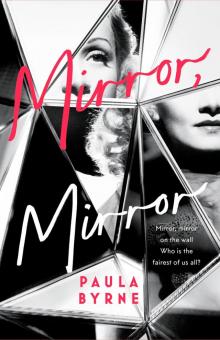 Mirror, Mirror
Mirror, Mirror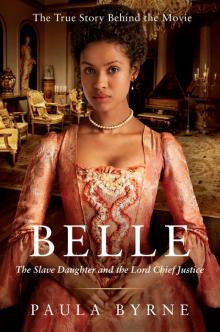 Belle
Belle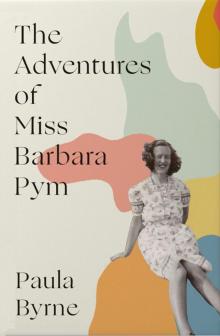 The Adventures of Miss Barbara Pym
The Adventures of Miss Barbara Pym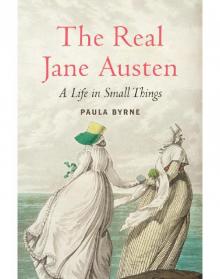 The Real Jane Austen
The Real Jane Austen Look to Your Wife
Look to Your Wife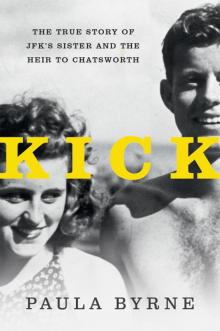 Kick
Kick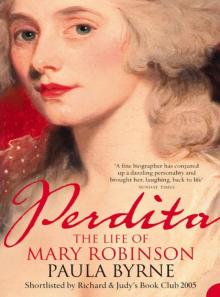 Perdita
Perdita Mad World: Evelyn Waugh and the Secrets of Brideshead (TEXT ONLY)
Mad World: Evelyn Waugh and the Secrets of Brideshead (TEXT ONLY)